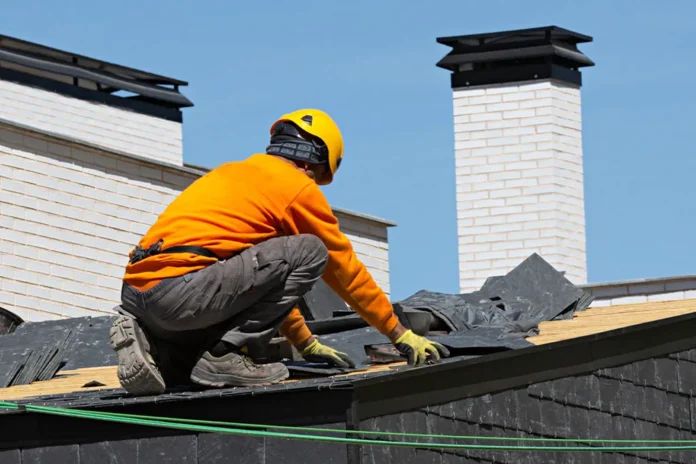A well-maintained roof is one of the most important aspects of homeownership. It protects your family, belongings, and investment from the elements, keeping you dry and comfortable. However, roofs are often out of sight and out of mind, leading many homeowners to neglect regular maintenance. Proper roofing care can extend the lifespan of your roof, prevent costly repairs, and ensure the safety of your home. This article discusses essential roofing maintenance tips to help keep your home safe, organized, and in shape.
Why Roofing Maintenance is Important
Your roof is your first defense against rain, snow, sun, and wind. Properly maintaining your roof can withstand harsh conditions and last many years. Neglecting routine maintenance, however, can lead to minor issues turning into major problems. Small leaks, missing shingles, or debris buildup can cause water damage, mold, or even structural damage to your home.
Roofing maintenance isn’t just about avoiding expensive repairs. It’s also about protecting your family from health hazards, such as mold and mildew, that thrive in a damp environment. A roof in good condition also helps maintain your home’s energy efficiency, preventing heat from escaping or entering your attic. Regular upkeep can prevent these issues and keep your home safe, dry, and comfortable.
Seasonal Roofing Maintenance Checklist
Roofing maintenance should be performed year-round, with specific tasks suited to each season. Here’s a breakdown of what to focus on during each season to keep your roof in top condition:
Spring
- Inspect for Winter Damage: After the harsh winter months, inspect your roof for any damage caused by snow, ice, or strong winds. Look for cracked or missing shingles, leaks, or damage to the flashing (the metal around chimneys, vents, and skylights).
- Clean Gutters and Downspouts: Over the winter, leaves and debris may have accumulated in your gutters. Clean them out to ensure proper water flow and prevent damage to your roof and walls.
- Check the Attic: A warm, moist attic can promote mold and mildew growth. Look for signs of leaks or moisture, as this could indicate roof damage.
Summer
- Inspect Shingles: The summer heat can cause shingles to crack or warp. Look for any visible damage, such as missing or curling shingles. Replace them promptly to prevent leaks.
- Trim Overhanging Branches: Trim any tree branches hanging over your roof. Overhanging branches can scratch your roof’s surface, damage shingles, and increase the risk of debris accumulating on the roof.
Fall
- Clean Gutters Again: Falling leaves and debris can quickly clog your gutters. Clean them out to ensure water flows freely and not back onto your roof.
- Inspect for Early Signs of Wear: Before winter sets in, look at your roof and ensure it’s in good shape. Check for any signs of wear and tear, like curling shingles, worn-out flashing, or moss growth, which could become problematic when winter storms arrive.
Winter
- Check Insulation and Ventilation: Proper insulation and ventilation in your attic are key to preventing ice dams. Ice dams occur when heat from your home escapes into the attic, melting the snow on your roof, which then refreezes at the edges, causing ice buildup. Sound insulation and proper ventilation can prevent this from happening.
- Clear Snow from the Roof: If heavy snow accumulates on your roof, carefully remove it to prevent damage. Snow buildup can lead to leaks, structural damage, or roof collapse. Use a roof rake or call a professional if necessary.
Signs Your Roof Needs Professional Attention
While some roof maintenance tasks are manageable for homeowners, sure signs indicate that professional help is required. Here are a few things to watch out for:
- Missing or Damaged Shingles: If your roof has missing, cracked, or curled shingles, it’s time to call a roofing contractor. These issues can lead to leaks if not addressed quickly.
- Water Stains or Leaks: Water stains on the ceilings or walls inside your home are often the first signs of a roof leak. Even small leaks can cause extensive damage to your home’s structure and insulation, so don’t ignore them.
- Mold or Mildew: A musty smell or visible mold in your attic or ceilings could indicate a roof leak, allowing moisture to accumulate.
- Sagging Roof: A sagging roofline is a serious sign of structural damage. If you notice any sagging or uneven spots, it’s essential to have your roof professionally inspected.
Read Also: Best Outdoor Table Lamp For Your Space
How to Inspect Your Roof
While a professional roofing inspection is always a good idea, performing a basic inspection yourself is also beneficial. Here’s how to do it safely:
- Visual Inspection: Use binoculars to inspect your roof from the ground. Look for missing shingles, cracks, or other visible damage. Check the flashing around vents, chimneys, and skylights to make sure it’s intact.
- Check the Attic: Go into your attic and look for signs of water damage, such as dark spots or streaks on the ceiling. This can indicate leaks in the roof.
- Inspect Gutters: Ensure your gutters are clear of debris and the downspouts drain water from your foundation.
If you’re uncomfortable climbing onto the roof, hiring a professional roofing contractor for a thorough inspection is a good idea.
Roof Repairs: DIY vs. Professional Help
Some minor roof repairs, like replacing a few shingles or cleaning gutters, can be done by homeowners themselves. However, specific maintenance requires professional expertise. For example, if your roof has extensive damage or involves structural problems or water leaks, it’s best to call a licensed roofing contractor.
Attempting DIY repairs on a damaged roof can be dangerous and may lead to further damage if not done correctly. Always prioritize safety and know when to call in a professional.
Maintaining Roof Ventilation and Insulation
Good ventilation and insulation are crucial for extending the lifespan of your roof. Poor ventilation can lead to excess heat and moisture buildup in your attic, causing shingles to warp, rot, or even crack. Proper insulation helps regulate the temperature in your attic, preventing ice dams and reducing the risk of roof damage.
Regular Professional Roof Inspections
Having a professional roofer inspect your roof at least once a year or after severe weather is a wise investment. They can identify problems that may not be immediately visible to the untrained eye and recommend necessary repairs or replacements.
Conclusion
Roofing maintenance is essential to keep your home safe, organized, and dry. By following a seasonal maintenance checklist, being proactive about repairs, and knowing when to call in a professional, you can extend the life of your roof and avoid costly repairs down the road. Regular attention to your roof will protect your home and family for years. Please don’t neglect your roof; care for it today to avoid headaches tomorrow.
Read More: The Best Glass Cleaner For Shower Doors



